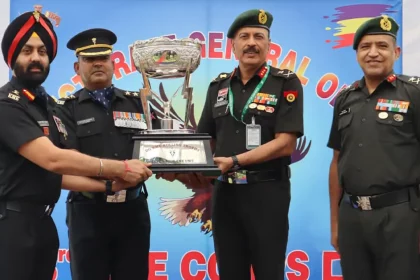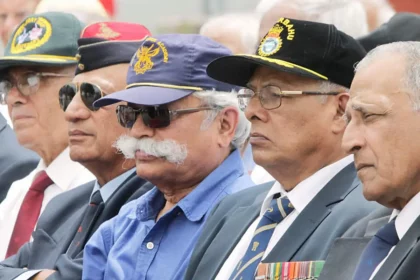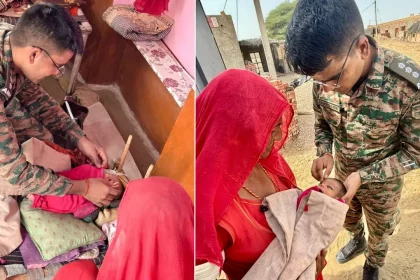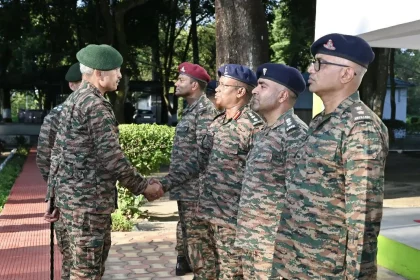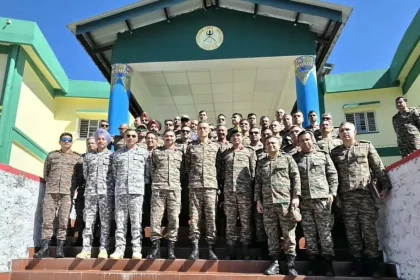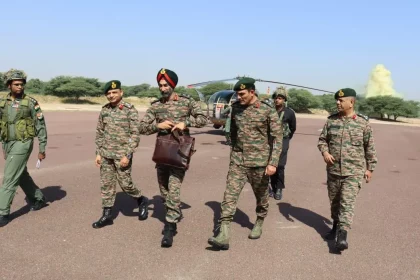Vajr Eagles Conferred the Prestigious DG EME Rolling Trophy 2025 for Best EME Unit of the Indian Army
Chinar Corps’ Vajr Eagles were awarded the DG EME Rolling Trophy 2025 for their exceptional performance in technological innovation, combat…
Defence Minister Approves 100% Hike in Financial Assistance for Ex-Servicemen and Their Dependents
Financial assistance for veterans and their families doubled; move to benefit non-pensioner ESM, widows, and dependents from low-income groups.
Army Doctors of Battle Axe Division Save Life of Newborn in Border Village of Jaisalmer
Indian Army’s Battle Axe Division Showcases Professionalism and Compassion in Life-Saving Medical Mission.
Lt Gen R.C. Tiwari Reviews Operational Preparedness of Agnirath Brigade at Solmara Military Station
Lt Gen R.C. Tiwari Commends Agnirath Brigade’s Multi-Domain Readiness and Technological Innovation at Solmara.
Participants of Higher Command Course Visit Forward Areas in Arunachal Pradesh to Enhance Operational Understanding
HCC Officers Gain Firsthand Experience of Northern Front Operations During Arunachal Visit.
Lt Gen H.S. Vandra Reviews Integrated Exercise of Strike Hawks and Ranbankura Division
Lt Gen H.S. Vandra Reviews Integrated Strike Exercise Showcasing Army Aviation–Ground Force Synergy.

